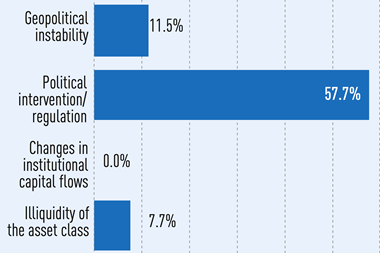GLOBAL - There are signs that the long-established debate between proponents of mark-to-market valuations and champions of the German long-term sustainable approach value are beginning to move towards a compromise.
The practice of providing a snapshot of a property's value, based on the price it would sell at a particular point in time, has often come in conflict with a German approach that looks to a more smoothed long-term value, especially at times when transactions are scarce.
But two industry leaders, from Germany and the UK respectively, said they saw the appeal of a compromised approach at the INREV annual conference, held in Athens last month.
Norbert Walter, chief economist at Deutsche Bank, explained the sustainable value approach "allowed for a lot of cushion in the balance sheet" of German lenders.
He said the investment bank had been moving to more "internationally competitive" approaches, but in the current environment "we are reconsidering".
"When I was young I always decided to go for one or the other," he added. "Now… I would indeed go the middle road," said Walter.
Nick Axford, head of EMEA research and consulting at CB Richard Ellis, admitted he was once "a vociferous opponent of the German valuation methodology". But, he said, "I have certainly revised my views… recognising the sustainable value concept is a useful thing."
Peter Denton, managing director, UK investors and financial sponsors at West Immo, meanwhile said London-based banks were becoming frustrated with valuers marking down property values despite low levels of comparables, especially when it causes loan-to-value (LTV) covenants to be breached.
"Initially, we all agreed with the concept of very swift movements by valuers to address what was perceived as value," he said.
"[But] do you want to call on an LTV clause when frankly no-one has a clue what the true value is?"
Chris Morrish, managing director at GIC Real Estate, also announced he was coming to the defence of valuers.
"What valuers are asked to do is give an opinion of the price at which a property would sell at market, at a point in time between a willing buyer and seller," he said.
"People were being prepared to lend based on a single valuation at a single date without any consideration, it seems, for whether that is sustainable or whether values are going to stay at that.
"I wonder how many of the bankers have asked the valuers if they think they will be giving the same value in 12 months' time, or perhaps in two or three years' time when the debts are due to mature," added Morrish.












